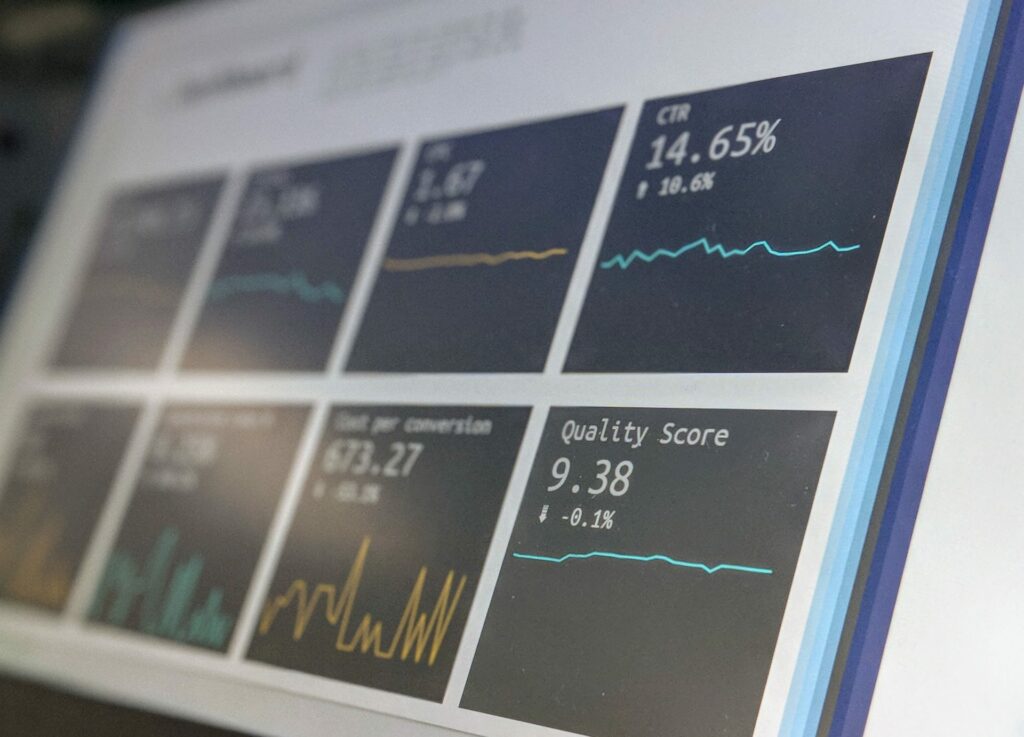Table of Contents
- What is a landing page?
- Ready, aim, fire
- First impressions
- Call to Actions
- Don’t overthink it – keep it simple
If you are looking to expand or promote your business, you’ve probably come across PPC (pay per click) advertising. But, here’s the thing. Spending all that time, effort and money creating your PPC campaign, only for your customers to land on an irrelevant or disappointing webpage, makes the whole thing pretty pointless.
In physical retail terms, it would be like putting an ‘open’ sign on the front door of a shop, only to walk in and find it completely empty. Sure, you’ve got the customer through the door, but what are they supposed to do with nothing to buy? They’d simply become confused or frustrated and leave, right?
Neglecting your PPC landing page, and the web development aspects that come with that, follows a similar narrative. If you’ve got the customer onto your website, it’s only half the battle as you have to seize that golden opportunity to achieve your aim. Your aim might be to make a sale, get sign-ups to your newsletter or any similar action. So, if you are yet to perfect your PPC landing page, here’s our guide on everything you need to know, so you can do just that.
What is a PPC landing page?
First things first, it’s important to understand what a PPC landing page is and why they are important. PPC stands for pay per click and is a method of advertising on search engines to directly reach your target audience. For example, say you’ve created a campaign through Google Ads for your plumbing business in Dubai. Every time someone searches for ‘plumbers in Dubai’, your Google Ad campaign will appear, and you pay Google an agreed amount when the user then clicks through to your website.
A PPC landing page is the webpage the user will be taken to. Ideally, it will be a page that’s relevant to the advert you created. So, if they click the link hoping to find a plumber to fix their burst pipe, but find something completely unrelated with no information to contact you – they aren’t likely to hang around, let alone hire your services!
Ready aim fire
You should create an aim for the page so it corresponds to your PPC campaign. In the example of the plumber, you could have an online form people could fill in to list their name, address and service they need. In addition, you could list an emergency number in case of customers who can’t sit and wait for a reply.
In essence, it’s about continuing on from your PPC campaign advert, to generate an actual sale or similar action you were intending for. Going back to your original ad, what did you have in mind when you created it? For example, if you sell an online course you want people to click your PPC ad and sign up for it. That very first page they land on should give them the option to do that, so that it corresponds with the ad they clicked on.

First impressions count
So, you’ve got someone to click on your Google campaign and it’s taken them to your website. The hard work doesn’t stop there! Starting with usability, you should check how user-friendly your PPC landing page is when accessed from different devices/browsers. After all, the last thing you’d want is for it to be impossible for Chrome or Android users, for example, to be able to fill in your form to sign up.
The content should be strictly relevant to your ad. For example, it can be really tempting to create clickbait within a PPC ad. After all, you want people to visit your website right? Well, they will be exiting straight away when they discover it’s not what they are looking for. This will put a serious dent in your PPC budget and achieve no sales, so should be avoided.
Although there’s no harm in some affiliate marketing, another tip is to avoid cluttered pop-ups or ads as soon as someone lands on the page. If your website comes across as spam as soon as someone lands on it, your PPC campaign just isn’t going to work. Lots of adverts also slow down browsers, making it even more frustrating.
Create call to actions
In Hollywood, they say “lights, camera, action!” When it comes to your PPC campaign, the same sentiment remains – you want people to straight away complete an action, as soon as they land on your website. This is especially the case when you’ve paid for the privilege through Google Ads. So, you pay for the ad, they click on the ad and now you are looking for that all-important action. Those are the 3 key steps.
The action could be to fill a form to request a callback or to directly buy one of your products. Whatever the aim of the PPC campaign, it should be as straightforward as possible to become a reality, the second someone is sent to the page via your ad. People aren’t keen on a treasure hunt for information, so make everything super clear from the moment they land on the page.

Don’t overthink things
We get it, you’re really excited by your PPC ad and want to share every possible thing about your company when your customers click on it. But, imagine going to a restaurant and having the starter, main course and dessert brought out all at once. Where do you start, and have you even got room for everything that’s on the table? It’s the same when creating your PPC landing page, as ideally, you should get straight to the point while keeping things simple. One thing at a time people!
Clearly display the action and information when people visit your PPC landing page. Plus, you should have some key information and links, so people can find out more if they want to. Otherwise, your website will seem over-complicated and frankly off-putting to potential visitors.
Need a little help?
If you know more about your ABC rather than PPC, don’t worry! Here at Imaginaire Digital, your PPC campaign is in safe hands. Call us today on 0115 971 8908 to learn more about our PPC Dubai service.


